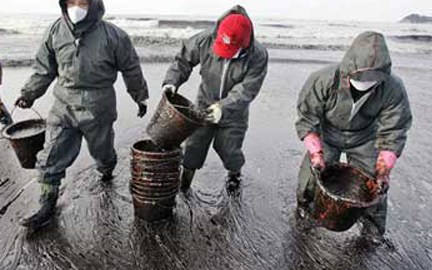Dealing With the Greatest Environmental Catastrophe Ever to Hit the Continental United States

The number one story that has been dominating the headlines for the past two months is the oil leak in the Gulf of Mexico. President Obama is now dealing with the greatest environmental catastrophe ever to hit the continental United States.
The main issue that I have with the oil spill is the fact that it didn’t have to happen—it was entirely avoidable on all accounts. New documents have recently been released showing that British Petroleum (BP) caused this spill by cutting corners at virtually every turn.
As I explained in my last blog post “The Agony of the Gulf Oil Spill Continues…and Continues..” methane gas down at the bottom of the ocean at those temperatures and at those depths is a solid, ice-like material. Here is one of the main problems: Instead of putting “heavy-oil” down the pipe to keep the methane gas down they used ordinary seawater to prevent the rise of the gas. As a direct consequence, the methane gas turned from the ice-like material into a gas because of the rise of temperature and shot up the pipe at a tremendous velocities and ignited causing the horrible explosions which took the lives of 11 workers. Now, many of the BP workers are pointing their fingers at BP’s corporate bosses, stating that it was ultimately the cost-cutting that caused the catastrophe to begin with. Originally, BP estimated that approximately 1,000-3,000 barrels of oil were leaking into the Gulf of Mexico per day. These new documents show that BP “already” had a rough estimate of the actual amount of oil being spilled and that number was NOT 1,000-3,000 barrels but rather 40,000-60,000 barrels per day which is very close to the estimate that physicists provided shortly after the explosions.
Many people are now starting to wonder why BP skewed the numbers in the first place. Well, when the accident first happened, BP stated that if you analyze the satellite data you can guesstimate how much oil is being spilled. What they failed to take into account was the oil beneath the surface. It turns out that the flow of oil is simple proportional to the velocity times the cross sectional area. If you know the area of the pipe and you know the velocity at which oil is being ejected—bingo! You multiply the two and that will give you a rough estimate. You can find BP’s detailed “Gulf of Mexico Response” on their website which includes The response in detail, the response in photographs, the response in video and animation, the response in maps, blogs from the Gulf and also How to Make a Claim
You may also watch a quick interview clip from yesterday where I was interviewed by Diane Sawyer about the Oil Spill. Needless to say… We still have lots of work to do and we can only hope that the cleanup process goes as planned.





